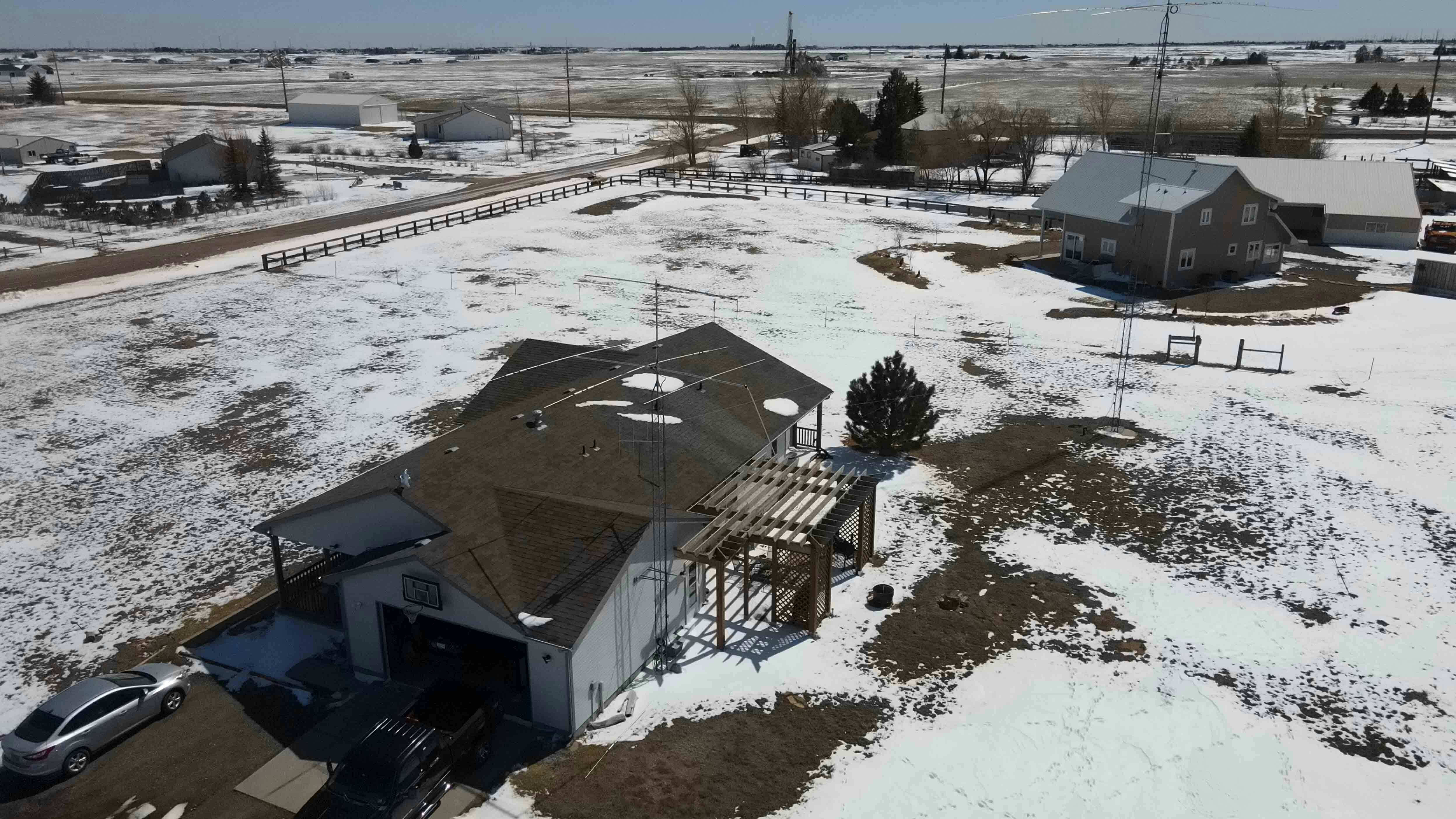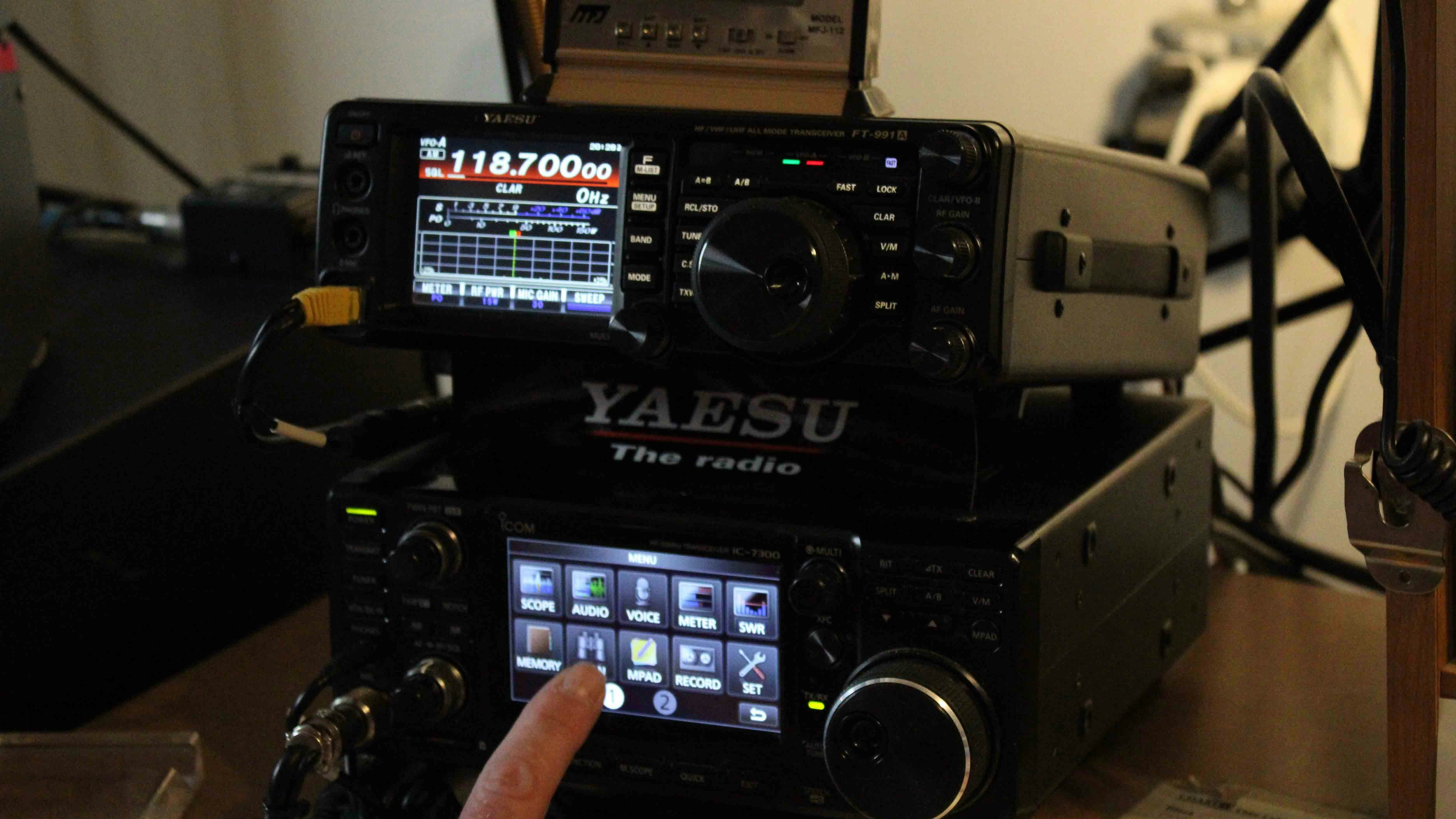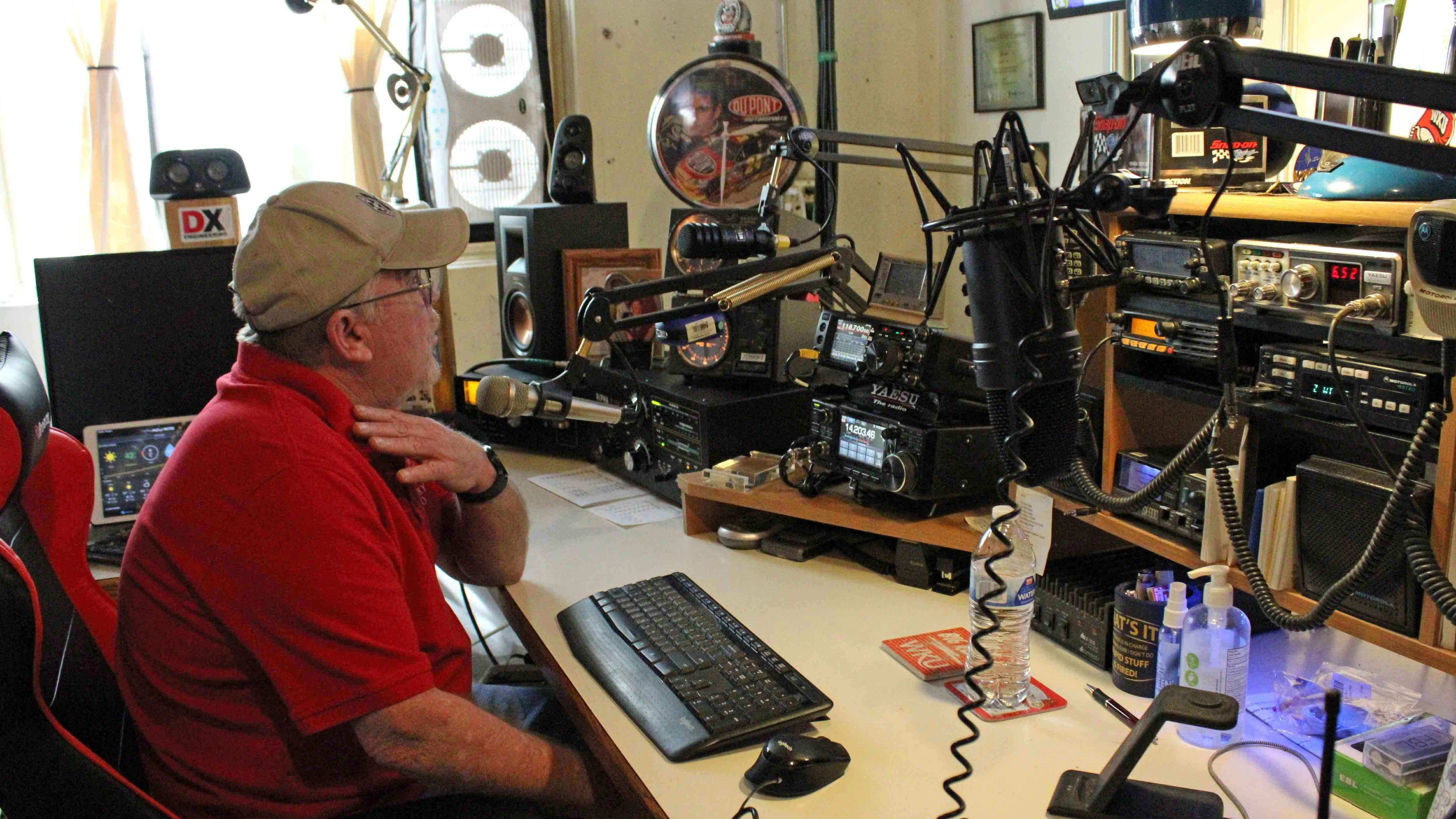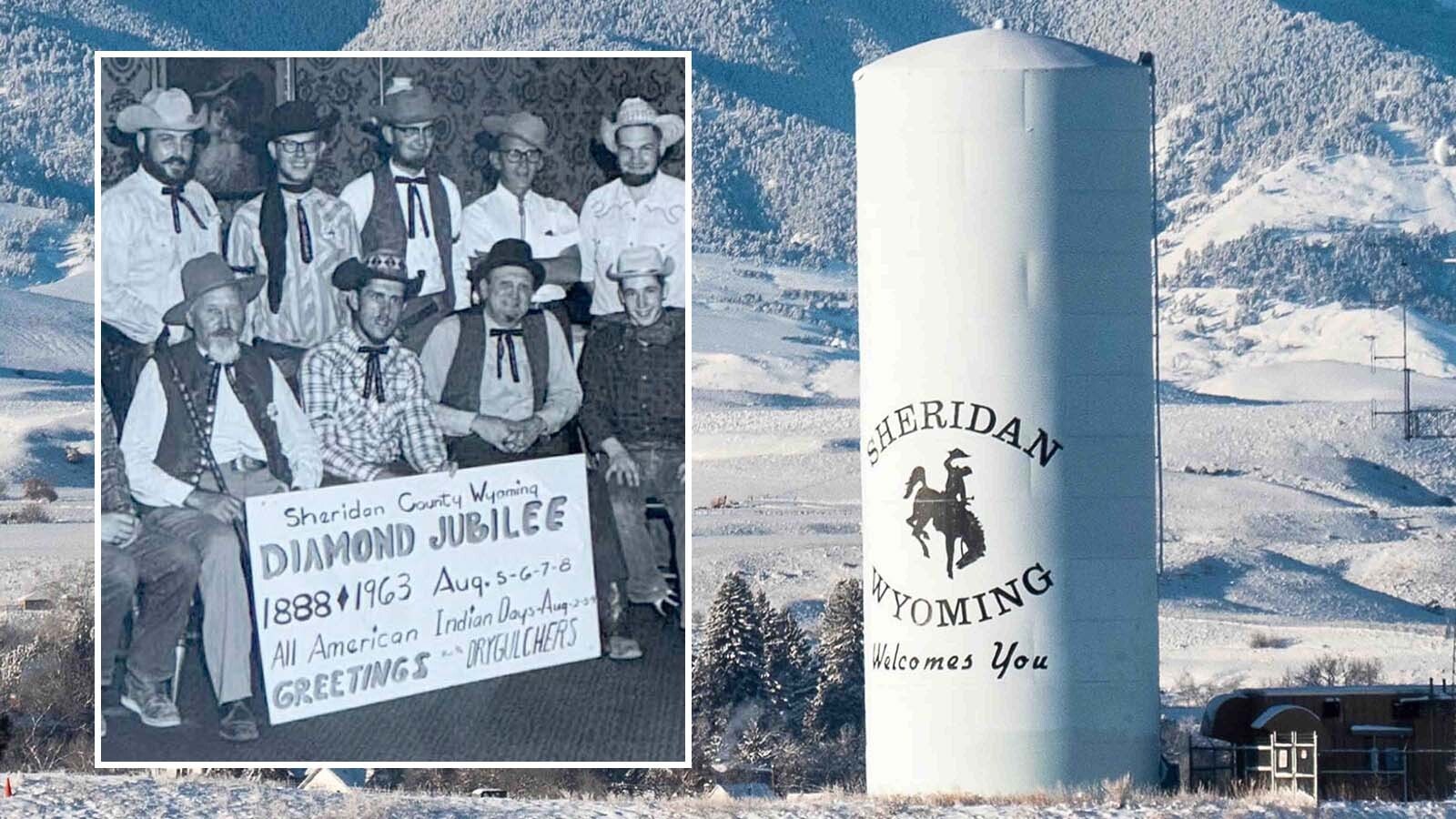Tom "Tex" Ritter has a couple large antennas rising up over his house north of Cheyenne, and they pick up signals from all over the world. He's talked to people in 169 countries, as well as someone in Antarctica. Over the airways, he's also known by his callsign WY7KY.
They call it HAM radio, which is a popular term for amateur radio operators. But it's hard to see what's so amateur about a hobby that requires the best operators to have intimate knowledge of 11-year solar flare cycles.
Radio Shack
Ritter's "shack," which is what HAM radio operators call their studios, is down in his basement. There are two large monitors looming over stacks of digital radios, handheld radios, CB radios, and microphones.
Back in the 1990s, when everyone got email addresses and access to chat rooms, anyone could talk to people all over the world. While it would have seemed HAM radio was on its way out, it's actually made the hobby much more robust by combining internet communications and radio repeaters to make communications easier across distances. There are over 2,200 HAM radio operators in Wyoming alone.
Ritter tuned into a frequency on his digital mobile radio system, which uses the internet to help radio signals travel further, and reached for his microphone.
"Anyone monitoring on Wyoming Wide? We're doing a demo here in Cheyenne. This is WY7KY on Wyoming Wide," Ritter said.
Moments later a voice comes through the radio, "WY7KY, this is Justin up here in Ten Sleep on the Meadowlark System going to the Wyoming Wide."
"Okay, Justin. Very good. We're just doing a little demo here for one of the news agencies down here in Cheyenne. How's everything up in Ten Sleep?" Ritter replies.

Repeaters
Besides carrying signals across networks, the internet allows HAM operators to use social media to communicate. There are websites where operators can look up people's callsigns, list all the contacts they've made through radio, and share pictures and interests about themselves.
Operators use repeaters, and one repeater system Ritter uses is called SkyHub. There's a repeater up on Sherman Hill, about 40 miles northwest of Cheyenne. It's "backboned" into the internet, which carries the signals it receives out to other repeaters.
There are dozens of these repeaters in Colorado, Wyoming, Utah, Kansas, Washington, Minnesota, New Mexico and even Canada.
A call comes through the system from an operator using a repeater in Loveland, Colorado, and Ritter reaches for the microphone.
"K0VH from WY7KY on Sherman Hill. Good afternoon," Ritter says.
"WY7KY. Good Afternoon. K0VH. I should know your name, but it's escaping me at the moment. How's it going?" the Colorado operator replies.
Social Connections
K0VH, whose real name is Dave Naatz, is into flight simulators, and on his biography tab on a HAM website are photos of a complex setup of monitors, yokes and dials he uses for the hobby.
Another contact Ritter has made is a woman in Reno, Nevada, who's big into horses.
Ritter is also a musician and plays bass in City Creek Band, which he displays on his HAM profile.
A wall of sheet plastic - Ritter said he likes the rustic look so he never finished the basement - separates his radio shack from his music studio. There's a drum set, a few guitars, a PA system and the obligatory neon bar sign.
His parents made him take eight years of piano lessons.
"When Elton John's 'Yellow Brick Road' came out, that was it. I was hooked," Ritter said.

Military Career
Ritter has been using HAM radio since he was a kid. At the start of his Air Force career, he was initially doing security work in Berlin before the Iron Curtain fell. In the 1980s, he started training on electronic communications.
"These racks in the 80s were like a whole room full of stuff for just doing what we can do on a PC now," Ritter says, as air traffic control communications at Cheyenne Regional Airport play in the background.
After he graduated from all his communication training, he headed out to F.E. Warren Air Force Base, where he worked on security systems around the weapons storage areas.
He then worked in Nellis Air Force Base in Las Vegas where he "walked around sweating my backside off." He said it prepared him for work in the deserts of Saudi Arabia in 1997.
HL9WY
By 2000, he was doing video teleconferencing (VTC) at Osan Air Base in South Korea, long before Zoom was commonplace. His official job was to do visual imagery and intrusion detection systems, but since all the weapons in South Korea are conventional, he didn't do that work. Instead, he set up video conferences for generals.
"They had a VTC at three o'clock in the morning, we had to go set up the VTC in the conference room and be there to manage it," Ritter said.
He took some of his HAM equipment with him to Korea. He'd run coaxial cable out the window up to an antenna on the roof. His callsign in Korea was HL9WY. The "HL9" was the prefix for GIs in Korea. He chose the suffix WY so if he talked to anyone stateside, they'd know he was from the Cowboy State.

Emergency Volunteers
Ritter's hobby goes beyond casual conversations with other hobbyists. He's also a volunteer for the Emergency Management Administration.
In the event of a natural disaster or war, HAM radio operators sometimes help with communications, and if the disaster is big enough - think nuclear war or zombie apocalypse - they could be the only means of long-distance communications.
A lot of times, the emergency managers will bring in amateur radio operators to fill the gaps," Ritter said.
Laramie County Emergency Management has a radio operations room to help coordinate communications in the event of an emergency in the area.
If the phone systems went down, 911 calls could be routed through the radio systems there.
During a hurricane that hit Puerto Rico, the American Radio Relay League, which is the U.S. flagship amateur radio association based in Connecticut, put a call out for 50 radio operator volunteers to go down to the country and help coordinate relief efforts.
"They had nothing down there. It had been wiped clean," Ritter said.
The volunteer operators were able to set up a network and get supplies and support wherever on the island it was needed.
"Yeah, it's pretty cool," Ritter said.





